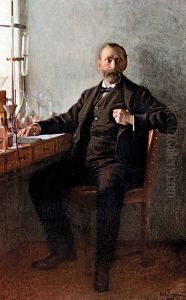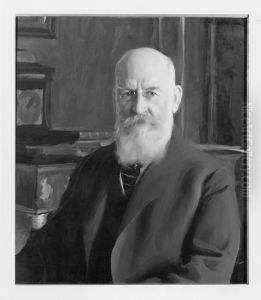Emil Osterman Paintings
Emil Osterman was a Swedish artist, born in 1883, who left a lasting legacy through his contributions to painting and illustration. His artistic journey began in Sweden, where he was initially exposed to the rich cultural heritage and artistic traditions of his homeland. Osterman's early years were marked by rigorous training and a deepening appreciation for the nuances of visual expression, which would later become hallmarks of his artistic style.
Throughout his career, Emil Osterman explored various themes and subjects, ranging from landscapes and portraits to more whimsical and fantastical compositions. His work is characterized by a keen attention to detail, a vibrant color palette, and a distinctive blend of realism and impressionism. This stylistic versatility allowed him to capture the essence of his subjects with both accuracy and emotional depth, making his artwork resonate with a wide audience.
Osterman was active during a dynamic period in art history, where traditional techniques were increasingly intersecting with emerging modernist trends. He managed to carve out a unique space for himself within this evolving landscape by remaining true to his artistic vision while also engaging with contemporary movements. His contributions to Swedish art were not limited to his own creations; Osterman was also a dedicated mentor and educator, influencing a new generation of artists through his teachings and guidance.
Despite his achievements, Emil Osterman remained relatively understated in his approach to art and life. He preferred the solitude of his studio, where he could focus on his craft away from the public eye. This modesty, combined with his dedication to exploration and innovation in art, endeared him to both his peers and followers.
Emil Osterman passed away in 1957, leaving behind a body of work that continues to be celebrated for its artistic excellence and emotional depth. His paintings and illustrations are preserved in various collections, both in Sweden and internationally, serving as a testament to his skill and vision as an artist. Through his enduring legacy, Osterman remains a significant figure in the history of Swedish art, remembered for his contributions to the field and his unique approach to visual storytelling.


